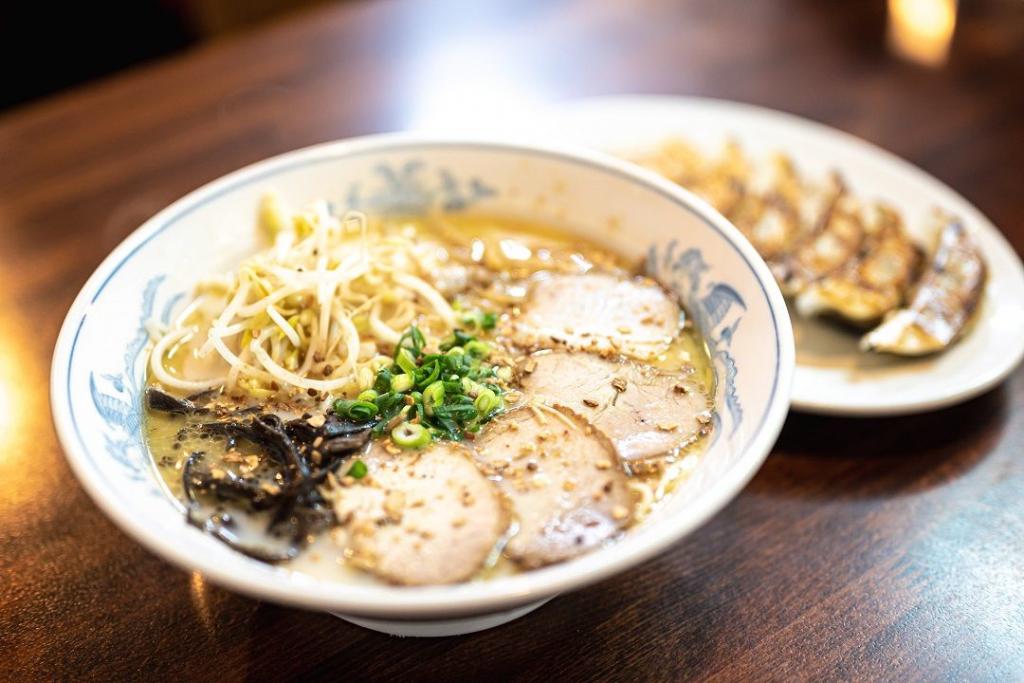What’s your favorite kind of ramen? If tonkotsu is your thing, Kumamoto ramen is a must-try spin on this tasty ramen style. This post will tell you all you need to know about Kumamoto-style ramen, plus introduce a couple traditional tonkotsu ramen shops.
The History Behind the Ramen
Ramen is a Japanese version of a Chinese dish that likely first came to Japan in the late 1800s. The history is a little hazy, but tonkotsu ramen was likely first made in the 1930s or 40s in the city of Kurume, about halfway between Fukuoka and Kumamoto on the island of Kyushu. Kurume ramen made its way to Fukuoka and got very popular as Hakata ramen.
In 1953, three enterprising friends (Kimura-san, Yamanaka-san, and Shigemitsu-san) from Kumamoto heard that one of the original Kurume ramen shops opened a new location in neighboring Tamana, so they decided to see what the fuss was about. They were so inspired that Kimura-san opened up Shoyoken in 1953, Yamanaka-san opened up Komurasaki in 1954, and Shigemitsu-san, after working at Keika Ramen for a few years, opened up Ajisen Ramen in 1968.
While Shoyoken unfortunately closed in 2018, I stopped by Komurasaki and Ajisen first to get a taste of Kumamoto ramen tradition.
Komurasaki Kamitori Chuo-ten
Komurasaki was founded in 1954 by the aforementioned Yamanaka-san who opened up this location, now their flagship store, in 1957. It was Komurasaki that arguably developed the flavor combination that would define Kumamoto ramen: Tamana-style tonkotsu ramen topped with garlic chips. Komurasaki uses both roasted and fried garlic chips. The fried garlic is for flavor, while the roasted garlic adds aroma.
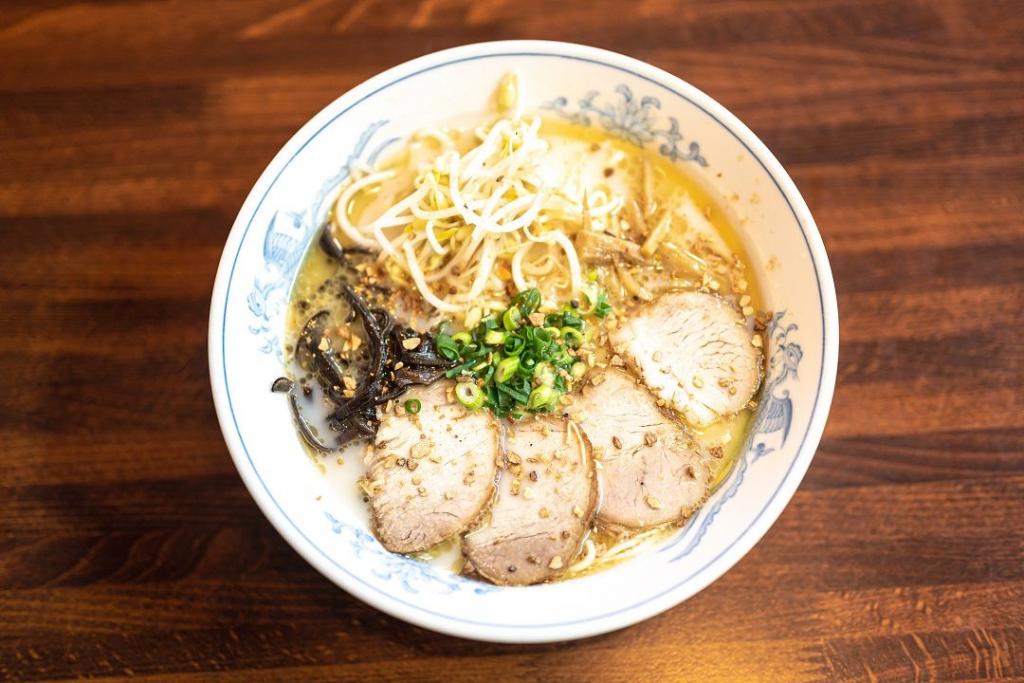
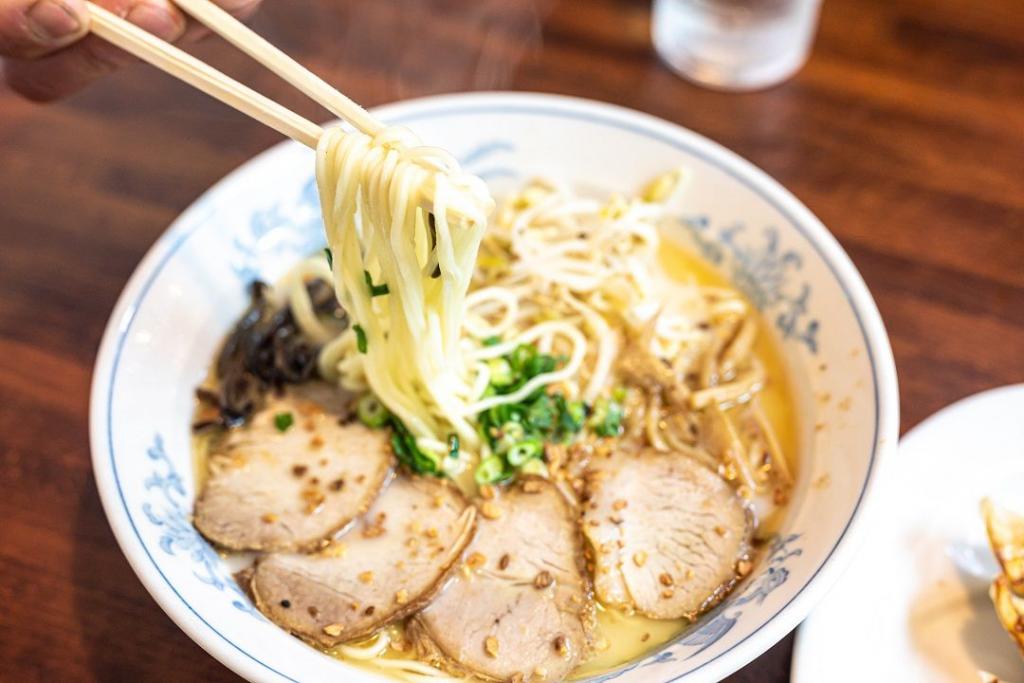
I ordered the O-sama ramen, which is a grade above their standard ramen and their most popular menu item. For how big a part garlic plays in the lore of Kumamoto ramen, the flavor and aroma isn’t as strong as in some Italian and Chinese dishes. The soup is also lighter than some of the thicker kotteri-style tonkotsu ramens while still having a pleasant tonkotsu creaminess.
Komurasaki Kamitori Chuo-ten
Address: Kamitoricho 8-16, Chuo-ku, Kumamoto
Hours: 11AM-4PM, 6PM-10PM
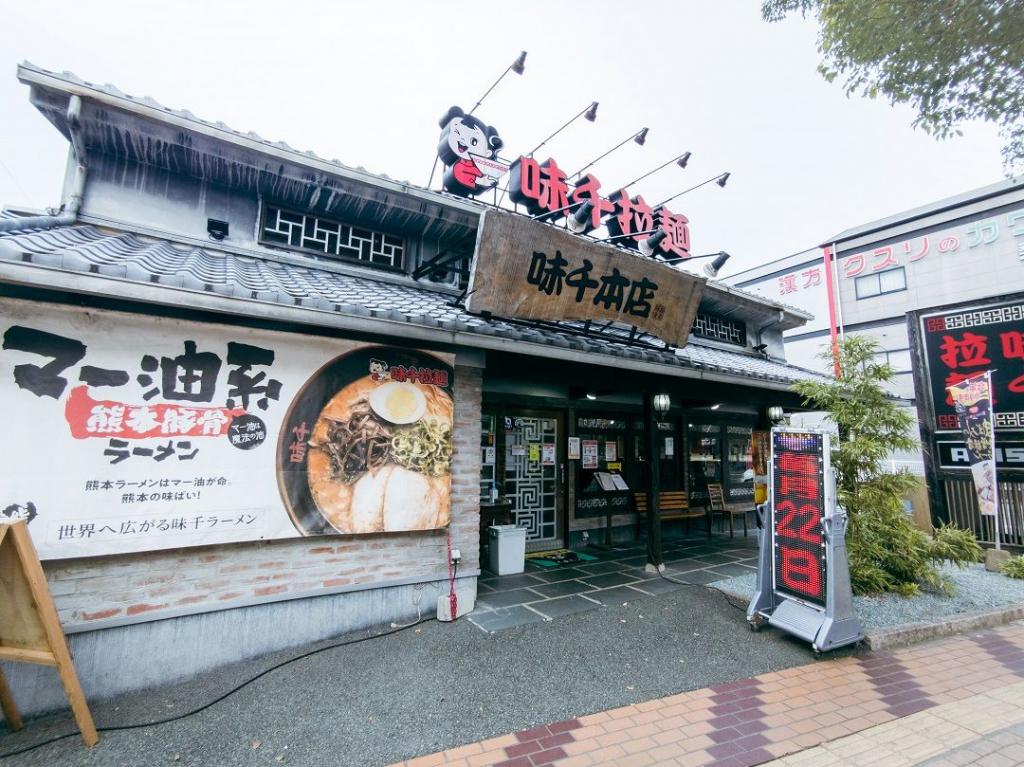
Ajisen Ramen Honten
Ajisen’s claim to fame is its mayu, a fragrant oil made with blackened garlic, that they top their ramen with. Ajisen’s founder, Koji Shigemitsu, was born in Taiwan. After coming to Japan and becoming interested in ramen, Shigemitsu thought an ingredient he knew from Taiwan would go great with tonkotsu ramen, and that ingredient was mayu. The deep roasted garlic oil was the perfect match for the creamy tonkotsu soup, and a new style of ramen was born.
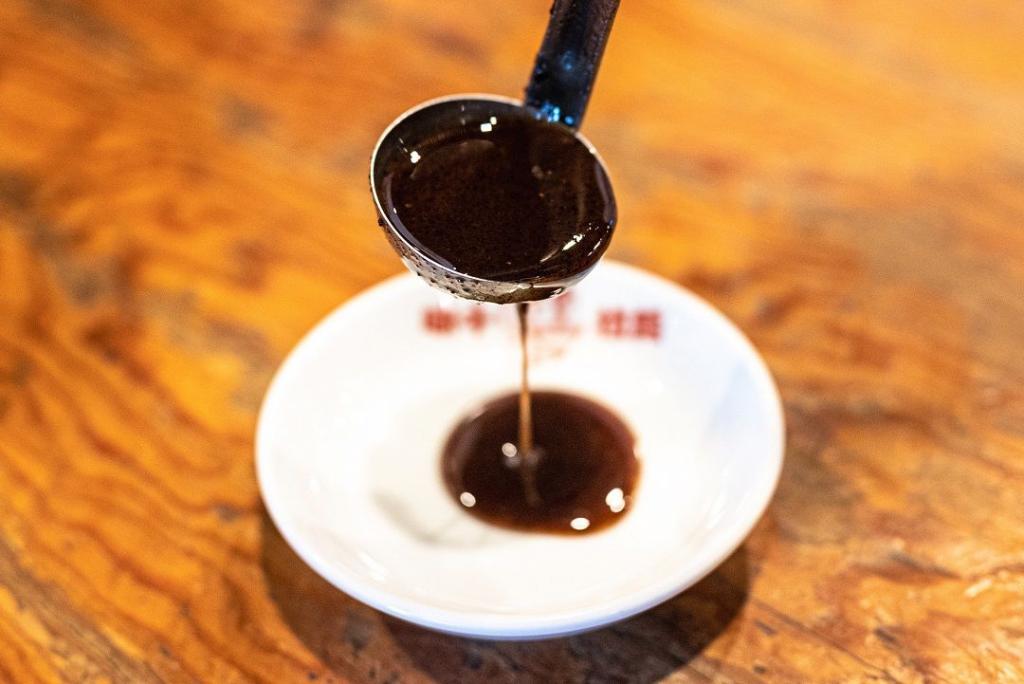
Ajisen now has over 800 locations all around the world and has helped introduce Kumamoto-style tonkotsu ramen to millions of people. It all started at Ajisen’s flagship store, located near the Kumamoto Prefectural Offices. While you’re in the area, be sure to check out the statue of Luffy there!
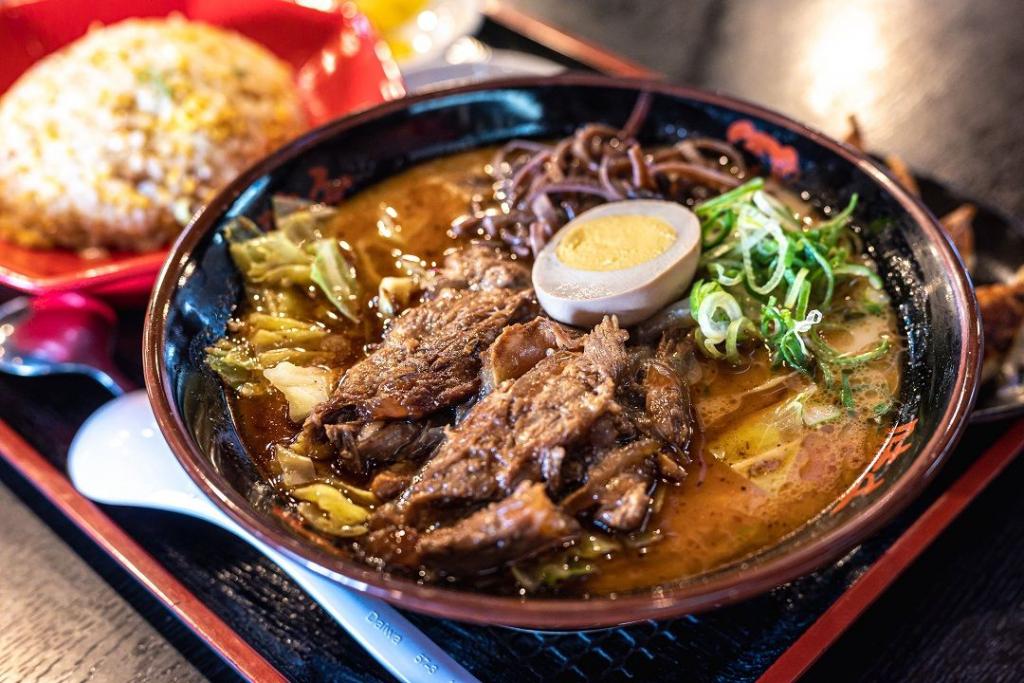
Ajisen offers a variety of ramen here, including their standard ramen, a kuro-mayu ramen with extra mayu, a recreation of their original recipe, and tonkotsu ramen topped with paiku pork ribs. I opted for the paiku ramen. The soup was thick and rich, with a distinct but balanced roasted garlic flavor that has a stronger roastiness than Komurasaki. The paiku was deliciously tender and flavorful and made for a truly satisfying bowl of ramen.
Ajisen Ramen Honten
Address: Suizenji 6-20-24, Chuo-ku, Kumamoto
Hours: 11AM-8PM
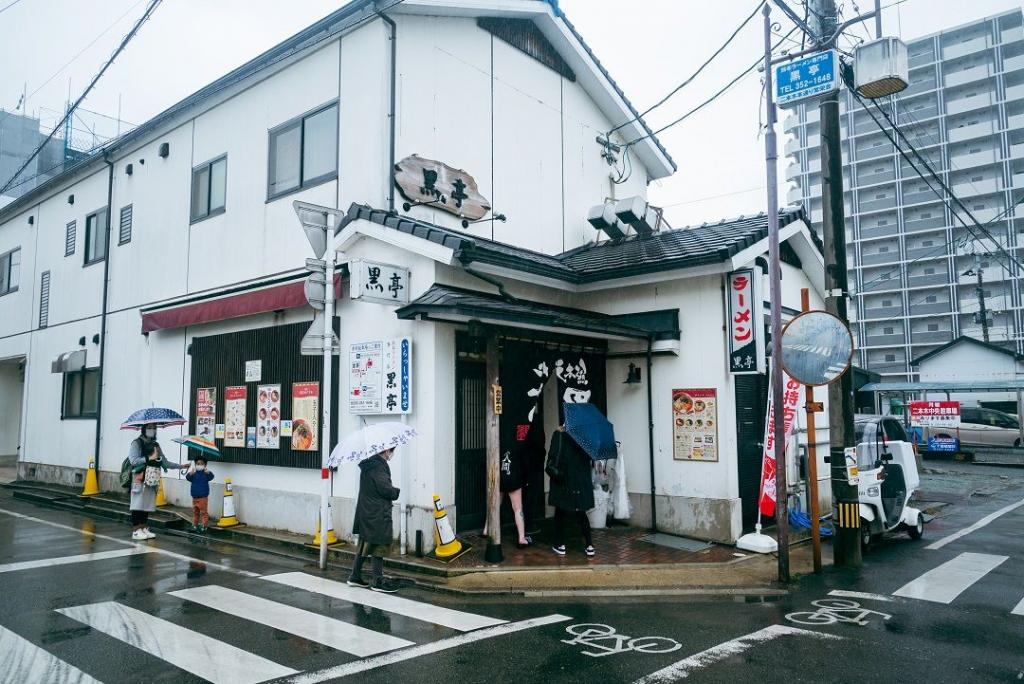
Kokutei Honten
Hirabayashi-san, the founder of Kokutei, learned ramen from Komurasaki’s Yamanaka-san before opening his own shop near Kumamoto Station in 1957. Kokutei moved its main shop to its current location (still near Kumamoto Station) in 2006. Kokutei now has two downtown locations (Shimotori and Sakuramachi), too.
While some Kumamoto ramen shops use a blend of pork bone and chicken bone stock, Kokutei opts for pork bone only, resulting in a thicker, creamier soup. In contrast to Komurasaki, Kokutei uses a blackened garlic oil similar to what Ajisen uses that floats on top of the soup and gives the ramen its characteristic look and aroma.
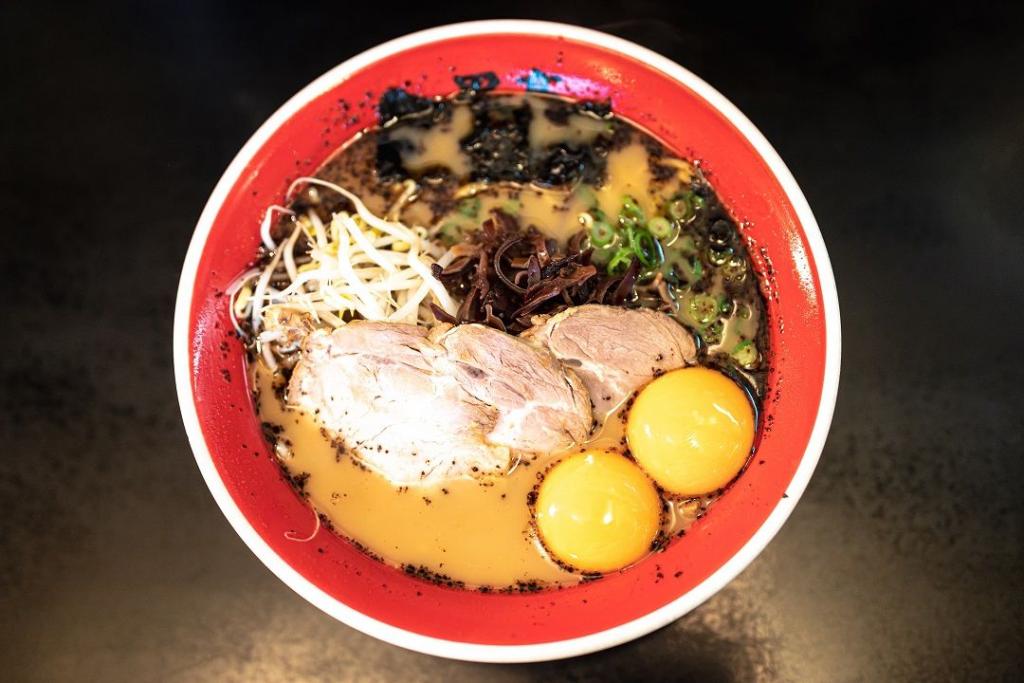
I ordered the tamago-iri ramen (“ramen with eggs”), which is their most popular ramen. The ramen comes with two raw egg yolks in the soup which, when mixed in, give the soup a richer, silkier mouthfeel that has made Kokutei so famous. The garlic oil gives the ramen its trademark roasted garlic aroma and a slight bitterness. All-in-all, this ramen strikes a solid balance between creamy tonkotsu soup, aromatic garlic, and silky egg.
Kokutei Honten
Address: Nihongi 2-1-23, Chuo-ku, Kumamoto
Hours: 10:30AM-9PM (closed 3rd Thursday of every month)
These are just a few of the dozens if not hundreds of ramen shops located in and around Kumamoto City. And once you’ve had your fill of tonkotsu, you can find great shio, shoyu, and miso ramen here as well. Kumamoto also has great champon (a Nagasaki specialty similar to tonkotsu but with thicker noodles and topped with seafood) and taipien (a Kumamoto specialty similar to champon but with harusame noodles), so be sure to try those, too!

